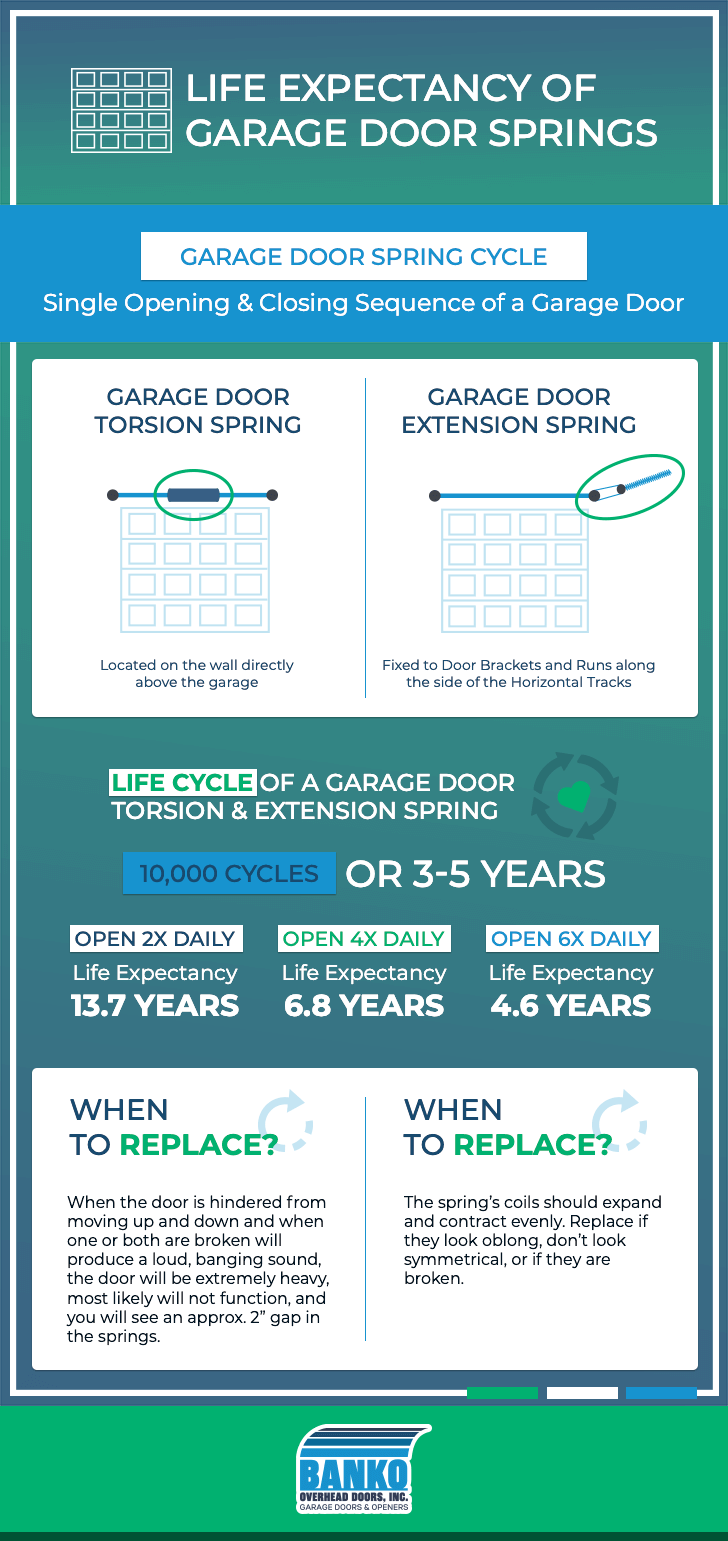When we refer to a garage door spring, we are talking about a torsion spring or extension spring, which is the part responsible for the actual lifting and closing of your garage door. A garage door spring breaking is one of the leading causes of a broken garage door, and it’s one that should be easy to spot.
The best way to prevent your garage door springs from breaking is to do regular inspection and maintenance during the expected life of the torsion springs and to replace them as they approach the end of their life cycle. It’s much better to replace your springs with new ones a couple of weeks early than have them snap when they finally give out, which can damage the door and cause a dangerous situation.
Unsure about how long your garage door springs should be lasting, or if it might be getting closer to time to replace them? We’ve put together a handy guide below on the Life Expectancy of Garage Door Springs, but a general rule of thumb is 10,000 cycles or 3-5 years. This will vary depending on the quality of your garage door springs and other factors, but should help you determine if it’s time to replace your garage door springs or not.

Why Garage Door Springs Break:
Age
The most common reason for a broken garage door spring is simply that it has worn out. A garage door spring’s life expectancy is not unlimited, and sooner or later, like every part, it just has to give. How long do garage springs last, typically? The average garage door spring, if correctly installed, should last about 10,000 cycles of opening and closing.
If you only go in and out of your garage once a day, that means you should expect a broken garage door spring around 14 years after the spring is first installed. If you go in and out twice a day, you’re down to 7 years. If you have kids using the garage door as an alternative entrance, a spouse who runs errands multiple times a day going in and out of the garage each time, or regularly bring storage items into or out of the garage, that number drops fast.
One way to prevent your garage door spring from breaking too soon is to purchase extended lifespan torsion springs. They’re more expansive, but they can last around four times as long.
Rust
Of course, there are other reasons why your garage door springs may break prematurely. A big one is rust. Rust is disastrous for torsion springs, increasing friction on the coil and corroding the spring itself. Inspecting the springs every season and spraying them down with WD-40 can keep them lubricated, healthy and rust-free.
Too Much Pressure on the Spring
Some garage doors may have only one long torsion spring instead of one on each side. We recommend the two-spring model, as single torsion springs have a shorter lifespan and when they fail, there’s no other intact spring to reduce the impact.
Garage Door Spring Replacement Near Me
For quality inspection, maintenance and if necessary, garage door replacement near me and the surrounding area, contact Banko Overhead Doors today.
Additional Resources on Garage Door Spring Repairs:
- Garage Door Spring Replacement
- Broken Garage Door Spring? Read This Before “Springing” Into Action on Your Own










